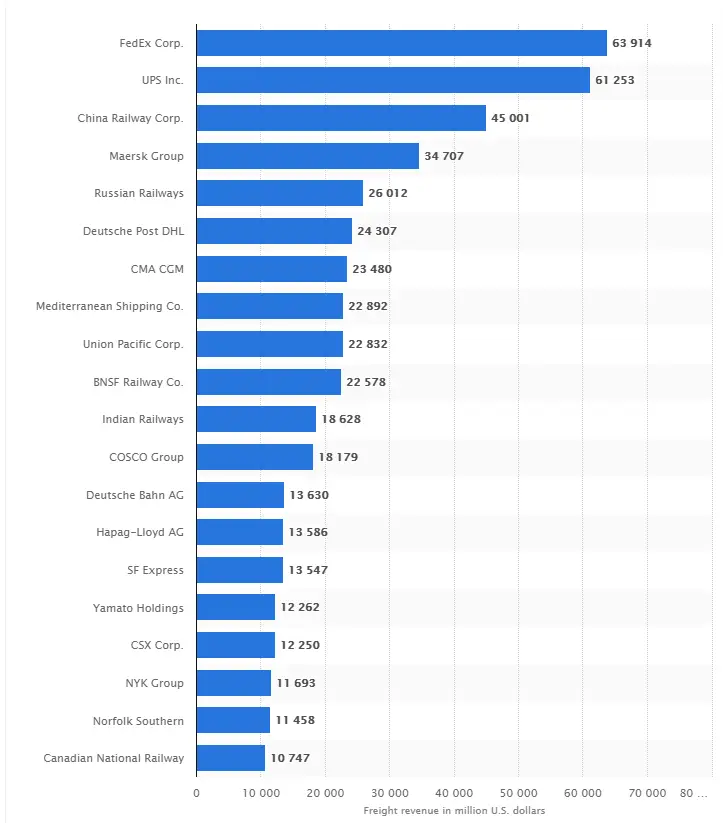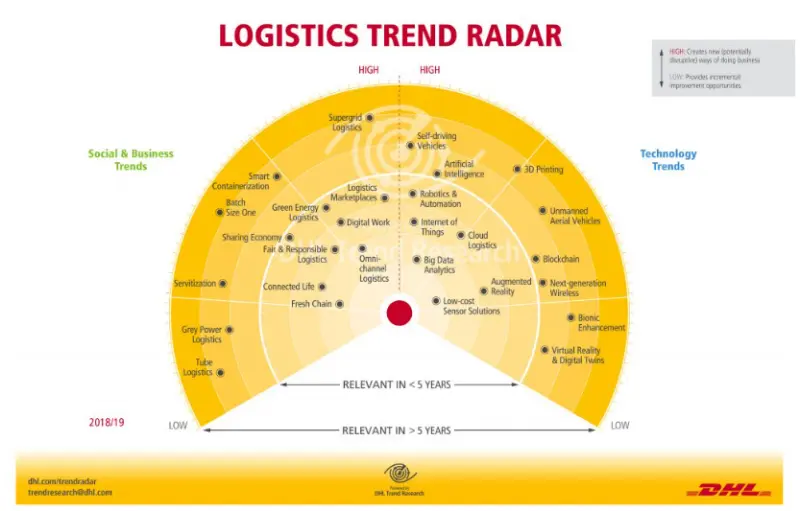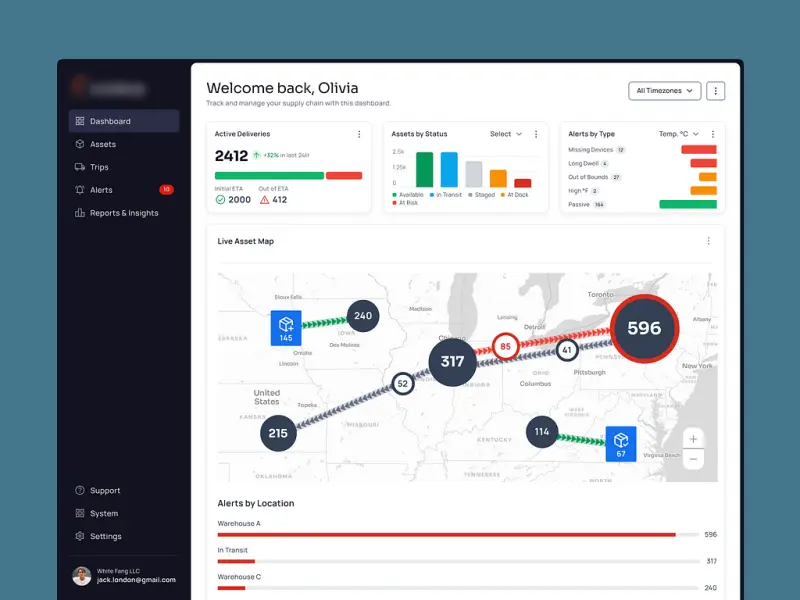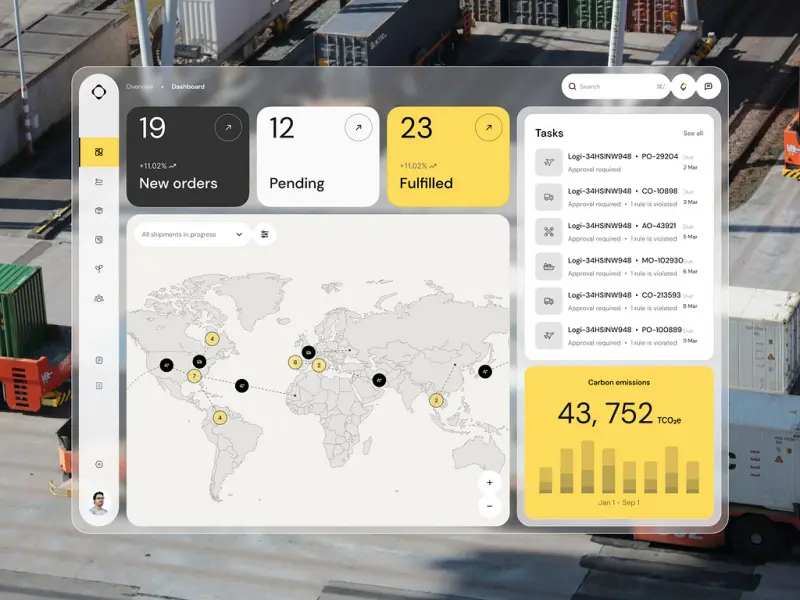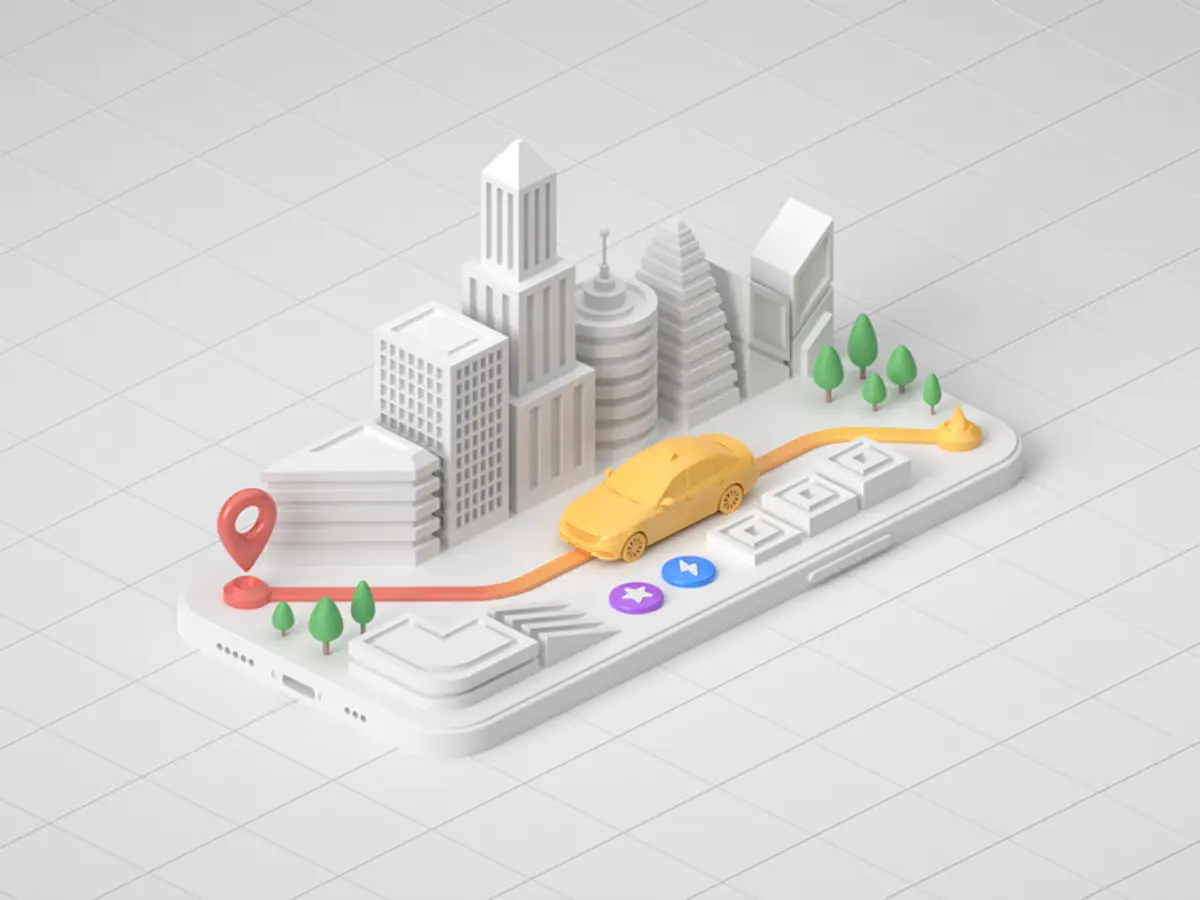The Definite Guide to Logistics Software Development
- TECHVIFY Team
- 0 Comments
Technological advancements are paving new paths for companies across different sectors, and the logistics industry is no exception. According to a survey by Gartner, 87% of supply chain professionals plan to invest in enhancing the resilience of their platforms. Logistics encompasses a broad and complex array of processes that demand the utmost precision and continuous optimization. Companies can automate and streamline these processes through software product development, significantly boosting efficiency.
In this article, we will delve into the realm of logistics software development, exploring its key features and technologies. We’ll also walk you through a step-by-step guide and showcase real-life case studies demonstrating how a dedicated software development team can transform your ideas into high-performance solutions.
I. Understand Logistics Software Development
Logistics software development involves creating technology solutions to automate and manage warehouse and transportation tasks. This allows transport companies to streamline freight operations, cut costs, save time, and enhance customer service. These applications encompass various tools, from fleet management and inventory control to vehicle tracking and order processing. Businesses use these solutions to gain insight into their processes, boost supply chain management efficiency, and lower operational and transportation expenses.
II. Growth of the Global TMS Market
The development of technologies like mobile, the Internet of Things, cloud computing, and artificial intelligence is driving the rapid growth of the global Transportation Management System (TMS) market. These logistics software solutions integrate various emerging technologies, offering businesses significant value and leading to their widespread adoption.
Research indicates that logistics management software can help companies save between five and ten percent on transportation costs. The global TMS market is projected to reach $30 billion by 2025.
Statista shows the revenue data of the world’s top freight transportation companies in 2018
A diagram by Statista shows the revenue data of the world’s top freight transportation companies in 2018, and it attributes their success to the adoption of management systems.
Deutsche Post DHL notes that TMSs were once accessible only to large companies due to their complexity and high implementation costs. However, advancements in technology, applications, and integration capabilities have made transport management platforms more accessible to businesses of all sizes.
Logistics trend radar by DHL
In June 2018, DHL released a logistics trend radar, a forecast diagram highlighting key trends expected to impact the logistics industry over the next decade. Significant technology trends include Big Data analytics, the Internet of Things, cloud logistics, augmented reality, low-cost sensor solutions, robotics and automation, artificial intelligence, and self-driving vehicles.
III. Benefits of Logistics Software That Brings to Your Business
Now that you understand logistics and supply chain software development better, let’s examine how these services can benefit your organization.
Improved Efficiency
This cuts down the time spent on manual tasks, enabling business owners to concentrate on strategic decisions and customer service. Companies can streamline processes with automated tools, achieving maximum efficiency. For instance, an application that provides real-time shipment updates can help employees ensure timely delivery.
Enhanced Accuracy
error is inevitable, no matter how careful one might be. Software, however, is designed with accuracy in mind. Software development services can provide systems that enable employees to manage operations precisely and confidently. Automated inventory tracking and accounting reports, for example, eliminate the possibility of manual errors, ensuring all information remains accurate and up-to-date.
Increased Transparency
An optimized system can significantly enhance customer satisfaction. The software allows you to offer customers full visibility of their orders, eliminating the need for manual tracking. Clients can effortlessly access real-time updates on their shipments, ensuring transparency and trust.
Reduced Costs
While the initial cost of creating a custom application may be high, the long-term benefits of logistics and supply chain software can be substantial. Automation can significantly reduce labor and resource costs. Additionally, the software also helps reduce costs in other areas like inventory tracking and customer service.
Learn More On:
IV. Features that Your Logistics Software Development Should Include
In this section, we’ll highlight the essential features that any logistics solution should have to meet user expectations.
- GPS Tracking
Real-time tracking allows companies to monitor shipments from the warehouse to the final delivery point. This data is crucial for route optimization, vehicle maintenance, and customer satisfaction. By tracking cargo in real-time, companies can adjust routes to avoid delays and ensure timely delivery. - Order Management
Logistics software development services provide tools for managing orders. A comprehensive system for generating, updating, and tracking each order leads to a more efficient and organized process. - Documentation
Every transaction requires documentation to ensure transparency and accountability. Logistics software simplifies record-keeping by allowing the creation of reports and invoices and securely storing them. Filtering features enable instant retrieval of documents, helping maintain organized records and gaining valuable insights. - Forecasting
Machine learning algorithms in custom logistics software can predict market trends and customer needs. By gathering and analyzing data, companies can gain valuable insights into customer behavior and forecast future interactions with their services. - Inventory and Logistics Management
Inventory control software helps companies monitor stock levels and optimize restocking processes. Features like barcodes and QR codes assist in organizing inventory and tracking missing or damaged packages.
Logistics Software
- Warehouse Management
Effective warehouse management involves the proper execution of numerous procedures and standards. Robust, safety-oriented systems help control inventory, optimize storage, and increase capacity, minimizing the risk of errors and improving overall efficiency. - Delivery Cost Calculation
Logistics software must calculate delivery fees that cover costs without deterring customers with high rates. Comprehensive cost analysis tools help identify the optimal fee structure to keep the business profitable while remaining competitive. - Offline Mode
An offline mode is beneficial when systems are down, or internet connectivity is an issue. Users can access reports, order history, and other pertinent data, ensuring continuity of operations. - Messaging and Calling
Incorporate messaging or calling features to communicate with drivers en route. This allows logistics managers to relay important updates, such as delays or route changes, ensuring efficient communication and problem-solving. - Notifications
A notification system informs users about changes, cargo status updates, system updates, and new offers and discounts. This feature keeps users engaged and informed, enhancing the overall user experience.
Have a Project Idea in Mind?
Get in touch with experts for a free consultation. We’ll help you decide on next steps, explain how the development process is organized, and provide you with a free project estimate.
V. A Step-by-step Guide to Developing Logistics Software
Let’s walk through a detailed guide on developing logistics software solutions, from gathering requirements to launching.
1. Identify Needs and Requirements
The first step in any software product development life cycle is information gathering. Analyze your current weak spots and formulate solutions to address them. Identify the root cause of issues, such as delayed deliveries, and determine whether they stem from suboptimal route planning or flawed calculations.
Business analysts can help you dissect existing processes and identify major pain points. Their expertise will pinpoint areas needing improvement, providing a foundation for developing effective solutions.
2. Select Deployment Type
Choosing between on-premise and cloud deployment is a crucial step in the logistics software development process. On-premise infrastructure requires a significant upfront investment for hardware and servers but offers greater control over management and maintenance.
While less expensive to set up and run, cloud computing involves relinquishing some control. However, delegating cloud maintenance to a third-party vendor allows you to focus on innovation and development. Cloud-based software is generally more affordable and compatible with other systems.
3. Allocate Resources
Regardless of the deployment model chosen, you must allocate company resources for the logistics software development project. Plan the timeline, budget, and staff needed to assess your capabilities. If you lack certain human resources, consider partnering with a software development agency to fill the gaps.
4. Define Software Functionality
Custom logistics software development enables you to tailor the solution by selecting the modules that align with your specific objectives. Depending on your business model, industry requirements, and current operational needs, you might include modules such as a CRM system, warehouse management system, supply chain management tool, enterprise asset management software, and manufacturing execution system.
Carefully assess your requirements to choose modules that will streamline your business operations and enhance customer satisfaction. If budget constraints are present, prioritize critical features initially and plan for incremental enhancements in future phases.
Logistic software development
5. Selecting a Reliable Development Partner
If your team lacks the necessary software development and testing expertise, partnering with a reputable vendor specializing in transportation software development might be beneficial. Building an in-house team can be both expensive and time-intensive while outsourcing to a third-party vendor can be a more cost-effective solution. This strategy allows you to allocate resources more effectively towards core business activities.
Before engaging an external agency for your logistics software development, thoroughly evaluate their capabilities. Verify their experience in the logistics industry and their proficiency with current technologies. Also, evaluate their communication skills and responsiveness to ensure they can effectively address your questions and concerns.
6. Create a Minimum Viable Product (MVP)
The main phase of logistics software development is the coding process. Many companies now prefer to start with a Minimum Viable Product (MVP) rather than a complete version.
An MVP is a simplified version of your software with only the most crucial features. This approach aims to address users’ primary needs without investing in unnecessary functionality. It allows you to test the software, gather feedback, and make improvements in future updates while managing costs effectively.
7. Implement Quality Assurance
Quality assurance is an essential aspect of the software development process. Logistics software development teams use Agile methodologies to work in short sprints, allowing continuous coding and testing. This process helps detect and fix bugs early, ensuring they do not affect the final product.
8. Launch and Ongoing Maintenance
Launching the application is not the end but rather the beginning of a continuous improvement cycle. After launch, gather user feedback to refine the application’s functionality and design. Remove features that do not perform well and add those that users find necessary.
This stage also involves regular updates and security patches to protect the software from cyber threats. Continuous updates are crucial to address vulnerabilities and ensure the software remains secure and effective.
Conclusion
In today’s fast-paced logistics and transportation industry, the importance of efficient software solutions cannot be overstated. With the right logistics software, businesses can streamline operations, reduce costs, and enhance customer satisfaction.
As the global TMS market continues to grow, driven by technological advancements, now is the perfect time to invest in custom logistics software. Whether you’re looking to improve efficiency, accuracy, transparency, or reduce costs, having a logistics software development company can transform your business operations and give you a competitive edge.
At TECHVIFY, we specialize in developing cutting-edge logistics software tailored to your unique needs. Contact us today to discover how our custom solutions can revolutionize your logistics operations. Let’s start building your business’s future together!
TECHVIFY – Global AI & Software Solutions Company
For MVPs and Market Leaders: TECHVIFY prioritizes results, not just deliverables. Reduce time to market & see ROI early with high-performing Teams & Software Solutions.
- Email: [email protected]
- Phone: (+84)24.77762.666




